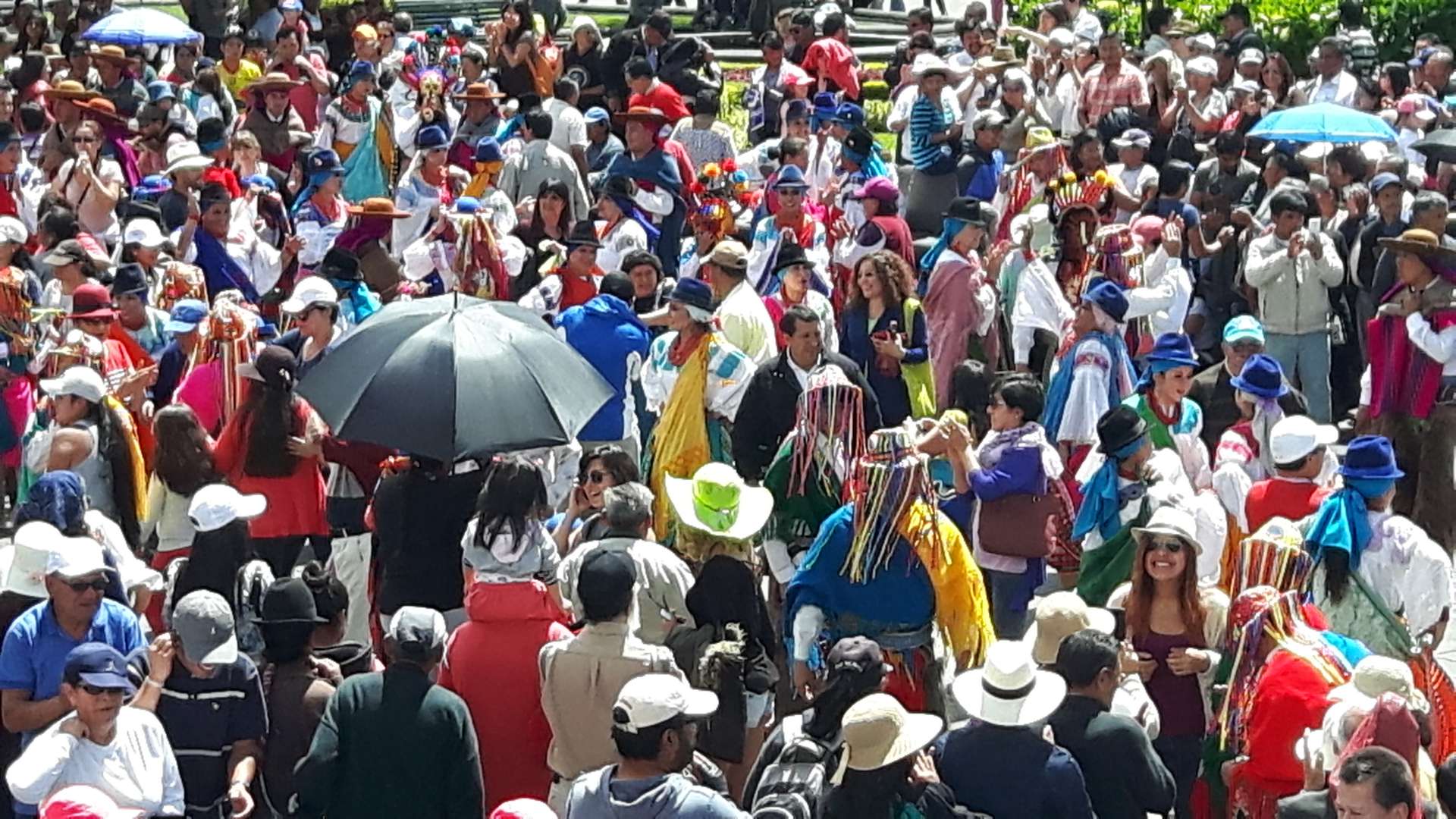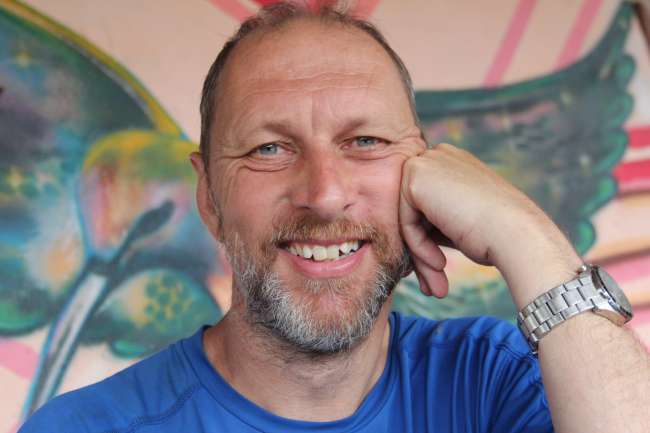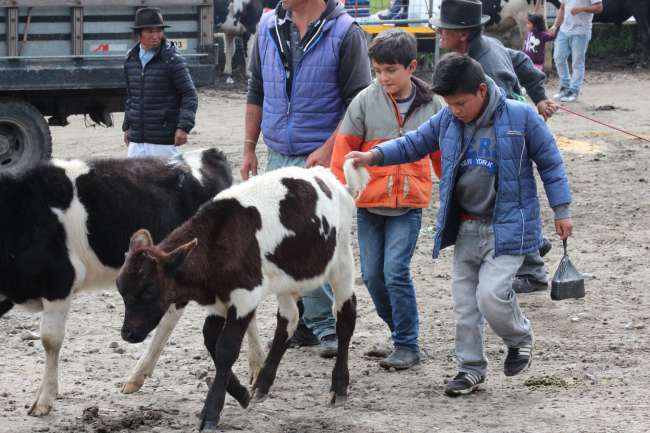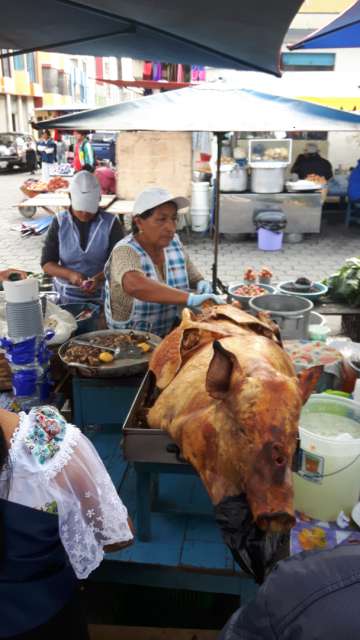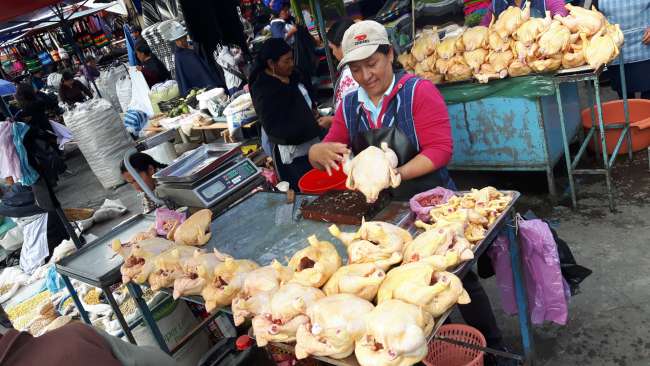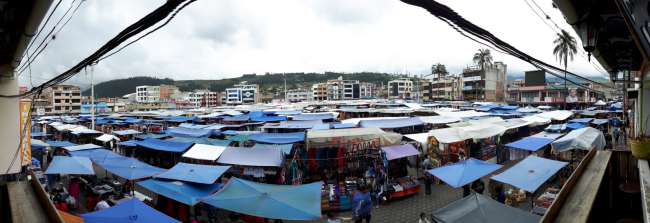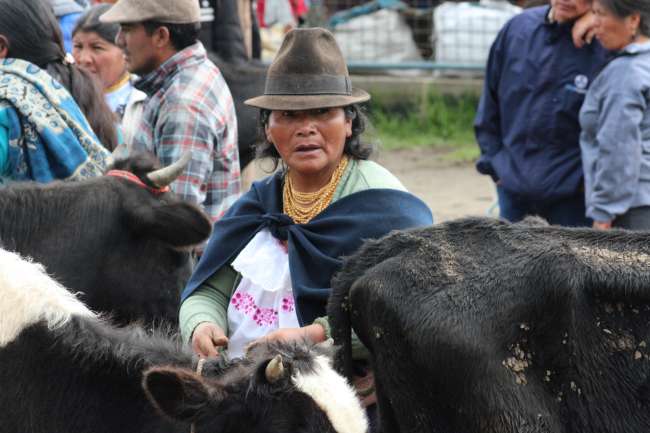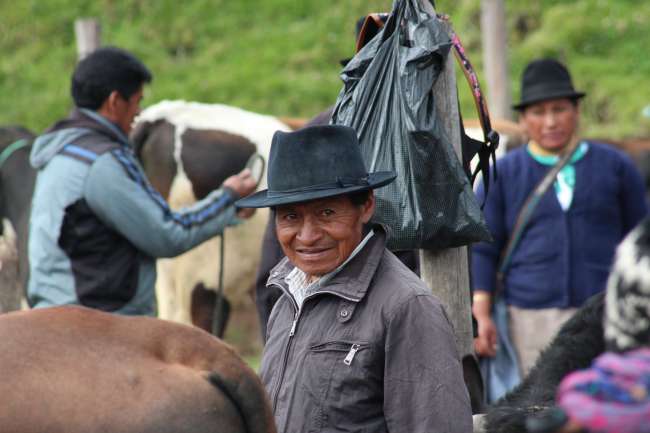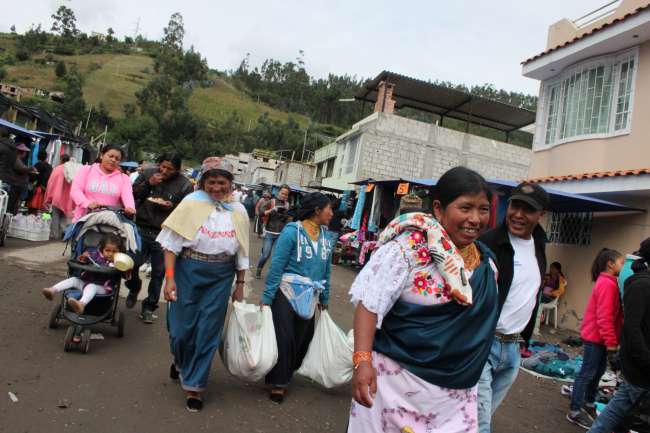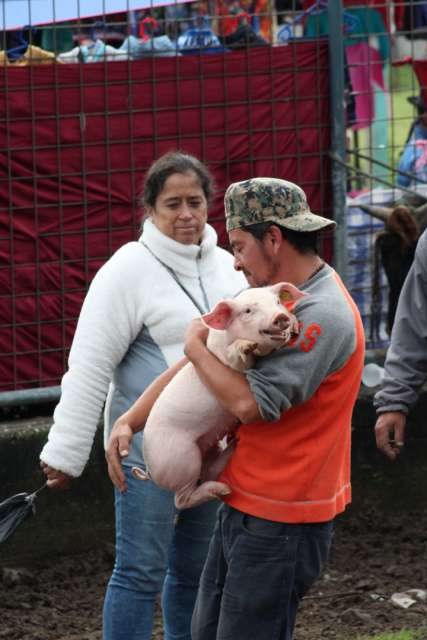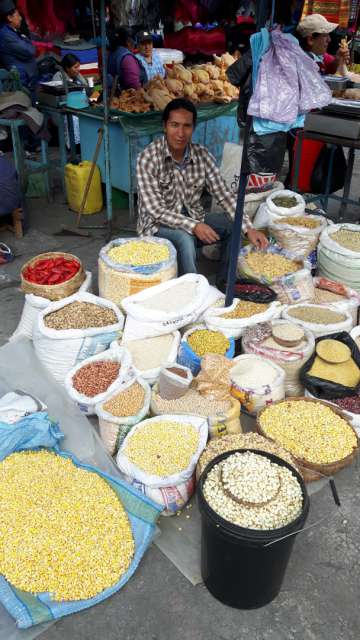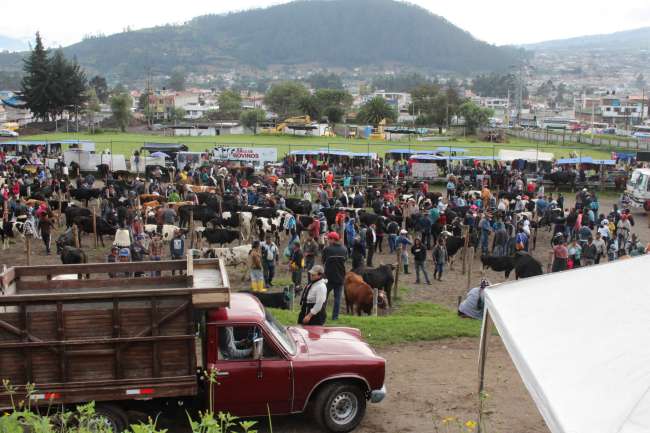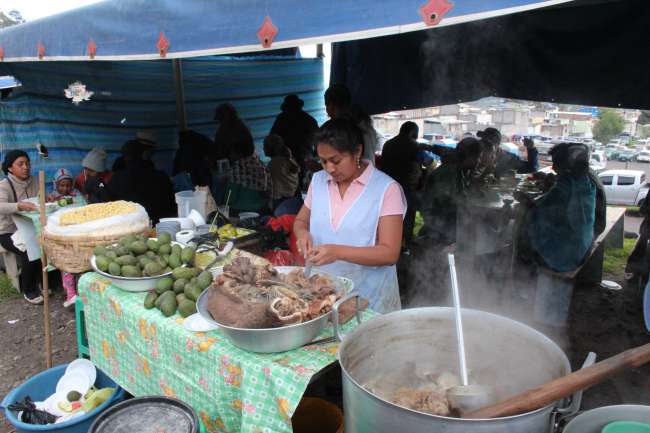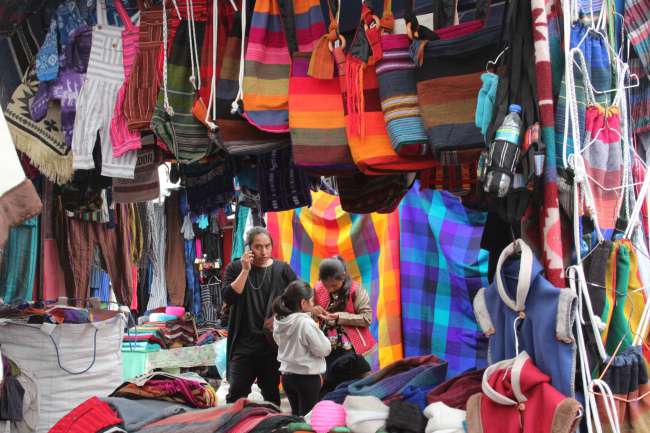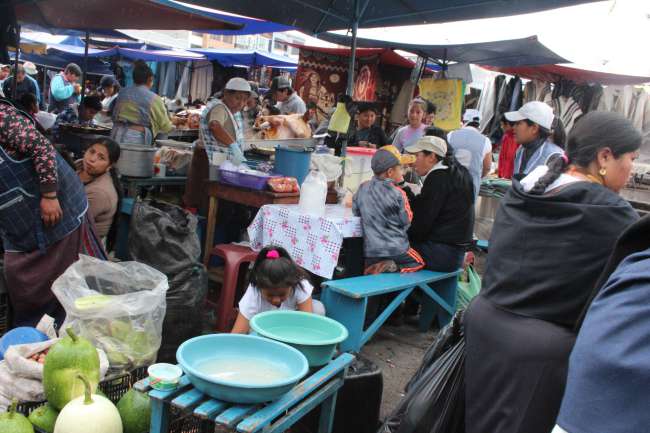Otavalo, market
Weşandin: 06.05.2017
Subscribe to Newsletter
At 4:25 AM, the alarm clock rang today. I got dressed, tidied up a bit, took my belongings, double-checked everything, and then went out into the darkness. As promised by my host mother, the taxi is waiting in front of the door. I negotiated 7 dollars with the driver to Carcelén. That is the main bus station in the north of Quito. From there, the main routes towards the Colombian border start. But first, I guide the taxi driver to Manuela's house and then we head north. The streets, which are crowded with heavy traffic during the day, are almost empty. So we move quickly and we've completed the first leg of the journey.
There is already some activity at the bus station early in the morning. At the ticket office, we buy tickets to Otavalo. Seats 9 and 10 are ours, fortunately on the right side, which gives us the chance to see the Cayembe, if the clouds... Well, we could have also sat on the left.
The bus is super comfortable and practically all passengers are asleep or dozing off. I wonder if it is really necessary to buy two seats next week. Then, when I travel to Puyo. However, during the journey, people keep getting on and off the bus and the cargo hatch opens and closes. I simply do not want my suitcase to be unloaded somewhere casually, accidentally. I think I will buy two seats. Better safe than sorry.
So: The rest of the journey to Otavalo is two and a half hours of dozing off. I will only realize how impressive the landscape is on the way back. The road winds far above the river along the mountain. First, it goes downhill, then up again, somewhere we cross the equator. Later it becomes flat and before the city of Cayembe, where you could actually see the beautiful volcano of the same name, the bus turns west and finally reaches Otavalo after passing the small lake. Some people get off, many even. I ask the driver if this is already the market. He says I should wait until the terminal. Finally, we do the same. Even there, at the bus station in Otavalo, chaos seems to reign. Manuela asks for directions to the market, and five minutes later we are there: at the market for fruits, grains, chicken, ponchos, scarves, fabrics, Andean dirndls (I don't have a better term because that's what they look like and the women here also wear this traditional attire). But actually, we want to go to the livestock market. Manuela asks for directions once, but it takes several more inquiries. Finally, we are where I asked the bus driver if we should get off and we cross that feeder road. Nevertheless, it was a good idea to go to the terminal because now it is clear where we have to get back on.
So, now I stop writing. You will experience the market better with your own eyes. Look at the photos.
Just one more piece of information: Basically, the market consisted of three parts. On one hand, there was the livestock market on the meadow on the outskirts of the city. Secondly, there was a large market hall below this meadow and the main road, and finally, the third part in the center of the city on a square. Like sun rays, the streets from there were also lined with all kinds of stalls and vendors. Tremendously large! They also had beautiful things.
But I will not show up in Switzerland with an Andean hat made of llama wool or a poncho made of sheep wool.
I simply don't have space in my suitcase. That's it!
Subscribe to Newsletter
Bersiv
